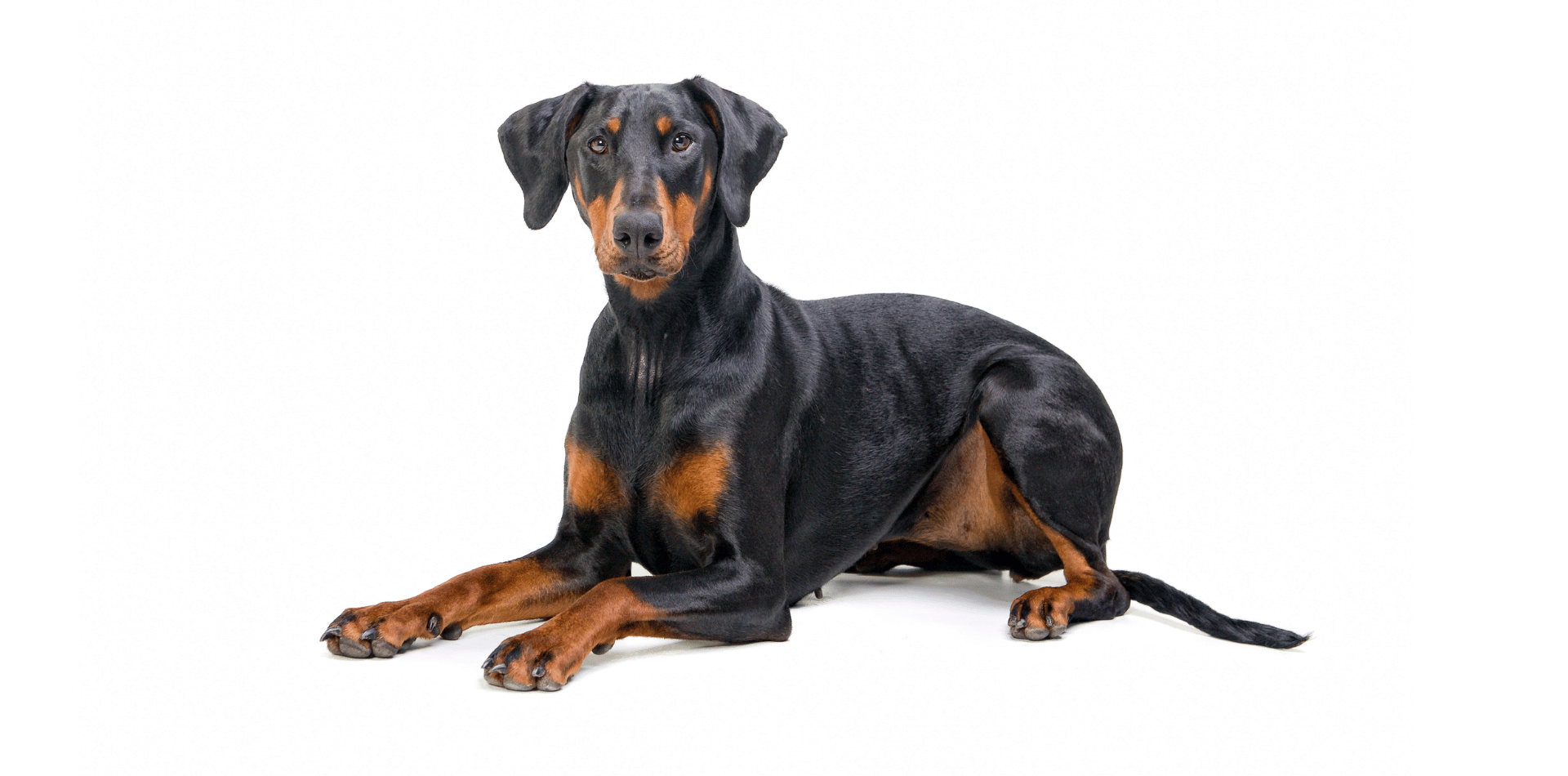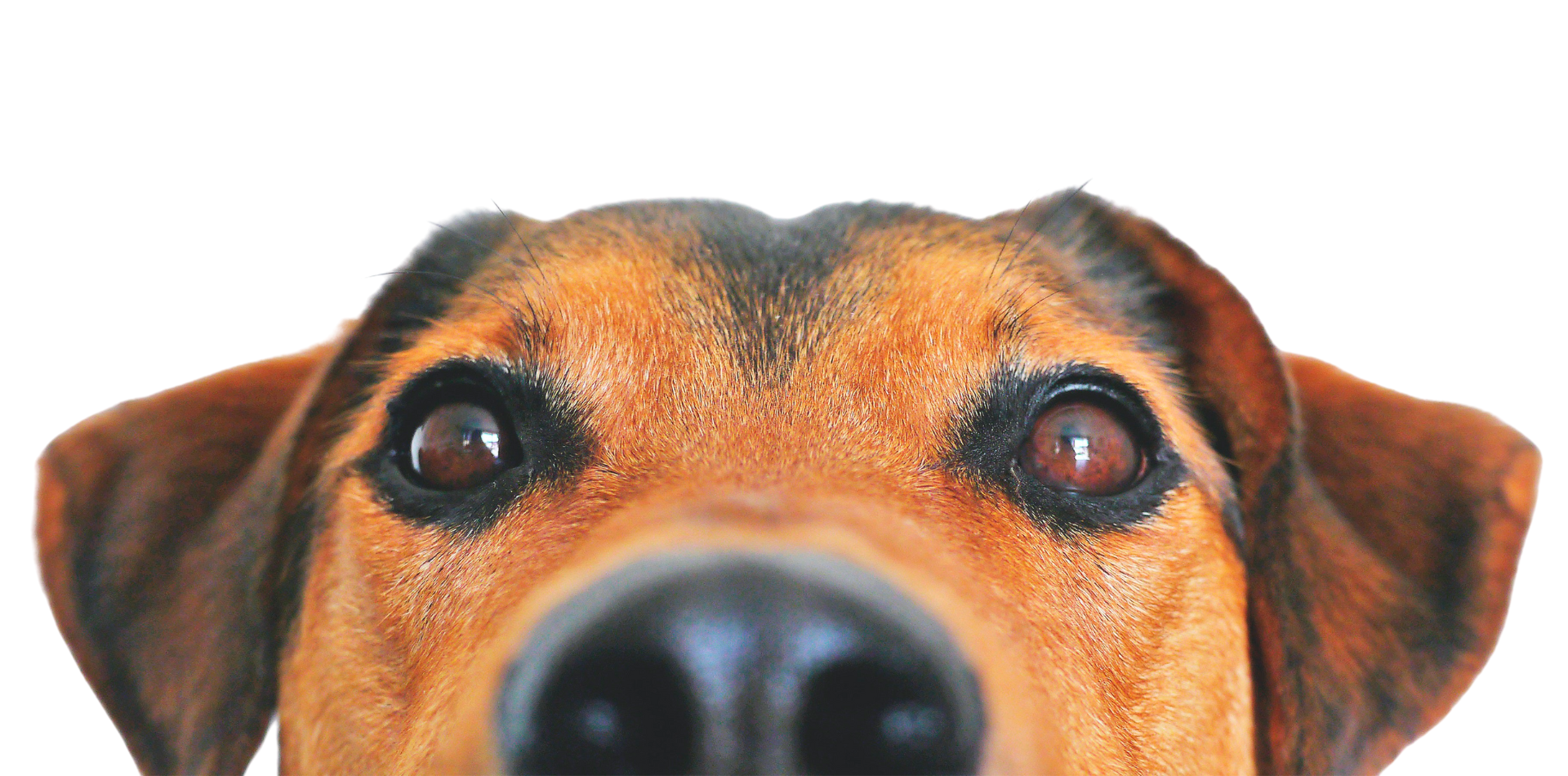Prevention and Early Detection of Skin Cancer in Dogs
Skin Cancer in Dogs - Prevention and Early Detection
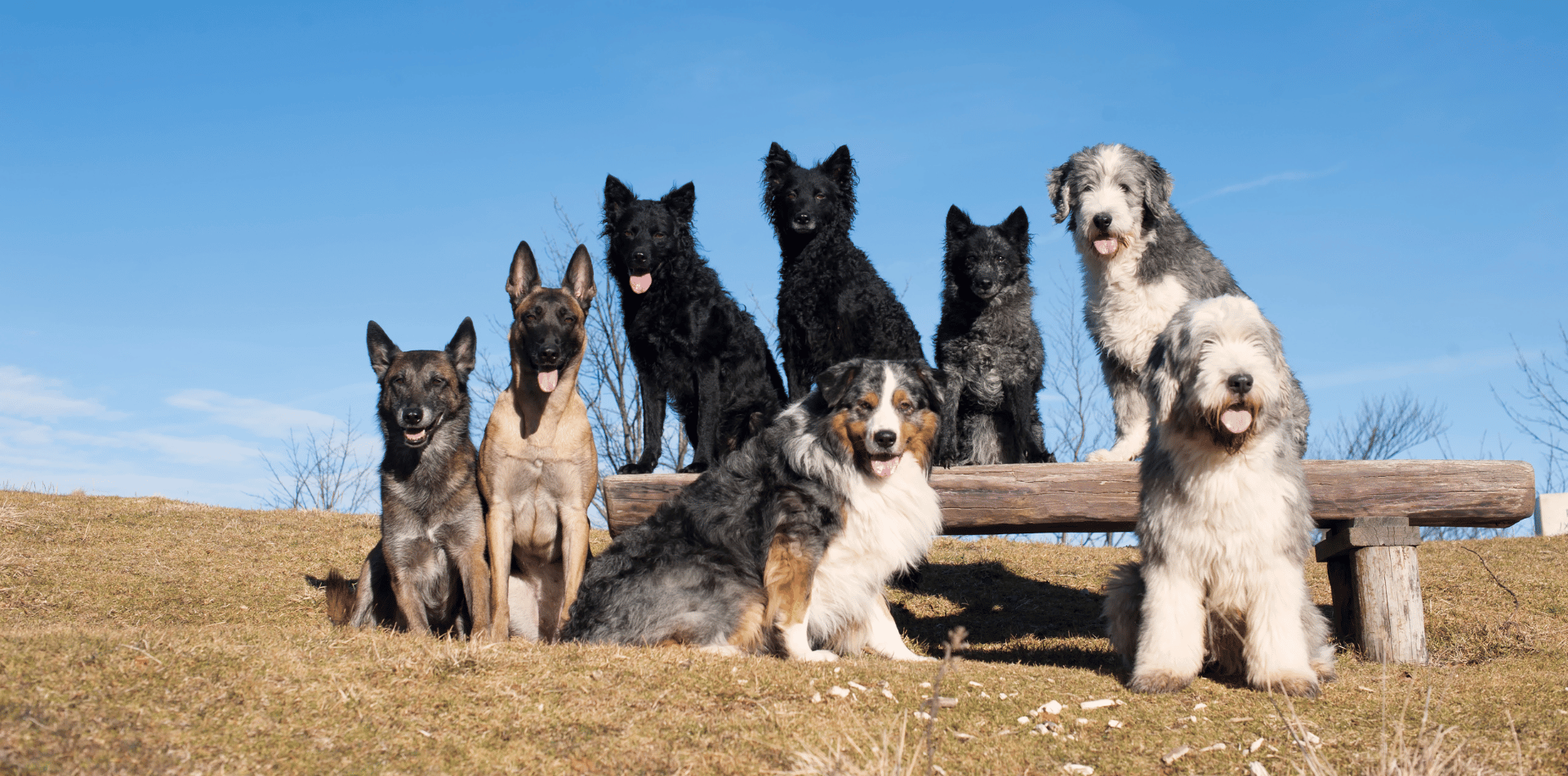
Skin cancer is one of the most common types of cancer in dogs, but with the right approach, it can often be prevented or detected early.
There are some important strategies for prevention and important early detection methods for skin cancer in dogs.
We will provide pet owners with some vital information to safeguard your furry companions.
Understanding Skin Cancer in Dogs
Understanding skin cancer in dogs is vital for any pet owner, given that skin tumours are among the most common growths found in dogs.
Before we talk about prevention and detection, let's delve into the specifics of the most prevalent types of skin cancer in dogs: melanoma, squamous cell carcinoma, and mast cell tumours.
Each of these cancers has distinct characteristics, presentations, and potential implications for a dog's health.
Melanoma
Melanomas in dogs can range from benign (non-cancerous) to malignant (cancerous), and they typically manifest as dark, pigmented tumours. However, they can also appear as non-pigmented masses. Melanomas are most commonly found in the mouth, on the skin, and less commonly in the nail beds or footpads. The malignant form is aggressive and can spread to other parts of the body, including the lungs and lymph nodes. Early detection and treatment are crucial, especially for melanomas in the mouth, as they can be particularly invasive.
Squamous Cell Carcinoma
Squamous cell carcinoma (SCC) is a type of skin cancer that originates in the squamous cells, which compose most of the upper layer of the skin. It often arises in areas not covered by fur, such as the nose, the edges of the ears, and the belly. SCC can also develop in the toenails, presenting as a swelling or infection of the toe. Exposure to the sun can increase the risk of squamous cell carcinoma, especially in dogs with light-coloured or thin coats. SCC can be locally invasive but is less likely to metastasize (spread) to distant parts of the body compared to melanoma.
Mast Cell Tumors
Mast cell tumors (MCTs) are the most common skin tumours in dogs. They originate from mast cells, which are a type of white blood cell playing a role in allergic responses. The appearance of mast cell tumours can vary greatly; they can look like small, harmless lumps or more aggressive and ulcerated masses. Their behaviour ranges from relatively benign, where they can be cured with surgery, to highly aggressive, with a high risk of spreading to other parts of the body, including the spleen, liver, and bone marrow. The grade of the tumour, determined through biopsy, is a crucial factor in determining the prognosis and treatment strategy.
Signs and Symptoms
The signs of skin cancer in dogs can vary widely but generally include the appearance of lumps, bumps, or changes in the skin's color or texture. Other symptoms may include:
- Swelling in the area of the lump or bump
- Ulceration or bleeding
- Sudden appearance and rapid growth of the mass
- Changes in pre-existing moles or skin lesions
It's imperative for dog owners to regularly check their pets for any changes in their skin, including new growths or changes in existing growths. Early detection plays a critical role in the successful treatment of skin cancer in dogs. Any suspicious changes should prompt a visit to the veterinarian, who can perform a thorough examination and recommend the best course of action, which may include biopsy, surgery, chemotherapy, or radiation therapy, depending on the type and stage of the cancer.
Prevention Strategies
Limit Sun Exposure
Just as in humans, prolonged exposure to ultraviolet (UV) rays from the sun can lead to skin cancer in dogs.
Certain areas of a dog's body, such as the belly, ears, and nose, are particularly vulnerable due to thinner or lighter-coloured fur, which offers less natural protection against UV radiation. To safeguard the health of our canine friends, it's essential to take proactive measures to minimise their risk of developing skin cancer due to sun exposure.
Understanding the Risk
Dogs that spend a lot of time outdoors, especially during the sun's peak hours (10 a.m. to 4 p.m.), are at an increased risk of skin damage from UV rays. Breeds with short coats, light-colored fur, or sparse fur on their belly and ears are particularly susceptible. The risk isn't limited to these dogs, though; even breeds with thicker coats can develop skin cancer on less protected areas of their bodies.
Sun Safety Measures for Dogs
Implementing sun safety measures can significantly reduce the risk of skin cancer in dogs.
Here are some practical steps to protect your pet:
- Limit Sun Exposure: Try to keep your dog indoors or in shaded areas during peak sunlight hours. When outside, provide access to ample shade where your dog can retreat from direct sun.
- Use Pet-Safe Sunscreen: Apply sunscreen formulated specifically for pets on vulnerable areas of your dog's body, such as the tips of the ears, the nose, and the belly. Human sunscreens can contain ingredients like zinc oxide, which is toxic to dogs if ingested. Pet-safe sunscreens are designed to be safe and effective for animals.
- Protective Clothing: Consider using protective clothing designed for dogs, such as sun shirts, which can offer additional UV protection. These garments are especially useful for dogs with thin or light-coloured coats.
- Regular Checks: Regularly inspect your dog's skin for any signs of sun damage, such as redness, sores, or changes in existing moles or spots. Early detection of skin issues can be crucial for treatment and recovery.
- Veterinary Consultation: Discuss your dog's sun exposure and skin health with a veterinarian. They can provide personalised advice based on your dog's breed, coat type, and health history, and recommend specific sun protection strategies.
Balancing Sun Exposure and Health
While it's important to protect dogs from the harmful effects of too much sun, moderate sun exposure is beneficial for both pets and humans. Sunlight helps the body synthesize vitamin D, which is essential for bone health and overall well-being. Therefore, the goal is to balance sun protection with allowing your dog to enjoy the outdoors and stay active.
Protecting dogs from excessive sun exposure is a key aspect of preventing skin cancer and ensuring their long-term health and happiness.
By adopting sun safety practices, such as limiting sun exposure during peak hours, applying pet-safe sunscreen, and utilizing protective clothing, dog owners can help their pets enjoy the sun safely. Regular veterinary check-ups and skin examinations are also crucial in detecting and addressing any signs of skin cancer early.
Healthy Diet and Lifestyle
A holistic approach to your dog’s health includes not only protection against external factors like sun exposure but also internal care through diet, exercise, and weight management.
A balanced diet enriched with antioxidants, regular physical activity, and maintaining a healthy weight play crucial roles in enhancing your dog’s immune system and potentially reducing the risk of cancer.
Balanced Diet and Antioxidants
Antioxidants are compounds that can prevent or slow damage to cells caused by free radicals, unstable molecules that the body produces as a response to environmental and other pressures. They are found abundantly in many fruits, vegetables, and certain meats that can be safe and beneficial for dogs.
- Vitamins E and C, selenium, and carotenoids are among the antioxidants that have been identified as potentially helpful in preventing cancer and other diseases by neutralising free radicals.
- Omega-3 fatty acids, found in fish oil and flaxseed, have been shown to have anti-inflammatory properties and may help reduce the risk of cancer. Incorporating these into your dog’s diet, considering their specific dietary needs, can support their overall health.
- A diet rich in fruits and vegetables can provide a natural source of antioxidants. Safe options for dogs include carrots, blueberries, and spinach, which can be added to their meals in appropriate amounts after consulting with a veterinarian.
It's important to remember that any dietary changes should be introduced gradually and tailored to your dog’s specific health needs, age, and breed. Always consult with a veterinarian before making significant changes to your dog’s diet.
Regular Exercise
Physical activity is not only vital for weight management but also for overall health.
Regular exercise can help:
- Maintain a healthy weight, reducing the strain on your dog’s body and decreasing the risk of obesity-related diseases, including certain forms of cancer.
- Boost the immune system by promoting healthy circulation, which allows the cells and substances of the immune system to move through the body freely and do their job efficiently.
- Improve mental health, reducing stress and anxiety that, over time, can have detrimental effects on physical health.
The type and amount of exercise appropriate for your dog will vary based on their age, breed, and health status. Activities can range from daily walks and playtime to more structured exercise like agility training or swimming.
Healthy Weight Maintenance
Obesity in dogs has been linked to numerous health problems, including an increased risk of cancer. Fat cells produce hormones and other substances that can promote inflammation and potentially create an environment conducive to cancer development.
- Regular vet check-ups are essential to monitor your dog’s weight and overall health.
- Portion control and healthy snacking play critical roles in weight management. Treats should be given in moderation and should not constitute more than 10% of a dog’s daily calorie intake.
- Engaging in daily physical activity helps burn calories and keeps your dog at a healthy weight.
A comprehensive approach to cancer prevention in dogs involves a combination of external care and internal wellness strategies. By providing a balanced diet rich in antioxidants, ensuring regular exercise, and maintaining a healthy weight, you can significantly contribute to strengthening your dog’s immune system and reducing their risk of cancer.
These measures, coupled with regular veterinary care, are fundamental to supporting your dog’s health and well-being.
Regular Grooming and Skin Checks
Regular grooming sessions offer a unique and valuable opportunity for pet owners to conduct thorough checks of their dog's skin, an essential aspect of preventive health care.
These checks can help in the early detection of skin abnormalities, including signs of skin cancer and other skin conditions. By integrating skin examinations into your grooming routine, you can monitor your dog's skin health closely and take action when necessary.
Why Skin Checks are Important
The skin is the largest organ of a dog's body and can be affected by various health issues, including allergies, infections, and cancer. Early detection of these issues is critical for effective treatment. Regular skin checks during grooming sessions allow you to notice any new or changing lumps, bumps, discolourations, sores, or changes in existing moles.
Early detection can significantly impact the prognosis for conditions like skin cancer.
What to Look For
When grooming your dog, pay special attention to the following:
- New Growths or Lumps: These can appear anywhere on the body and may vary in size, shape, and colour. Not all are cancerous, but any new growth warrants a closer look by a veterinarian.
- Changes in Existing Moles or Spots: Look for changes in colour, size, or texture. Moles that start to bleed or become raised should also be examined by a professional.
- Sores That Don't Heal: Persistent sores could indicate an infection, skin disease, or cancer, and should be evaluated by a veterinarian.
- Changes in Skin Colour or Texture: Unusual colouration (e.g., patches of white, red, or black skin) or texture changes could suggest underlying health issues.
- Bumps Under the Skin: While grooming, you may also feel lumps beneath the skin that aren’t visible to the eye, which should be assessed by a vet.
How to Conduct a Skin Check
- Be Methodical: Start at the head and work your way down the body, ensuring you cover every area, including under the belly, behind the ears, and between the toes.
- Use Your Hands and Eyes: Look for visual abnormalities and use your hands to feel for lumps or bumps under the skin.
- Take Your Time: Don’t rush the process. The more thorough you are, the less likely you are to miss something.
- Record Your Findings: Keep a log of any abnormalities you find, including their size, shape, and location. This can be valuable information for your vet and can help you monitor changes over time.
Next Steps if You Find Something
If you discover any abnormalities during a grooming session, it’s important to consult with your veterinarian. They can assess whether further investigation is needed, which may include a biopsy or other diagnostic tests.
Incorporating skin checks into your regular grooming routine is a proactive way to monitor your dog’s health. It not only helps in identifying potential health issues early but also strengthens the bond between you and your pet. Regular veterinary check-ups, combined with your at-home grooming and skin examinations, provide a comprehensive approach to maintaining your dog's overall health and well-being.
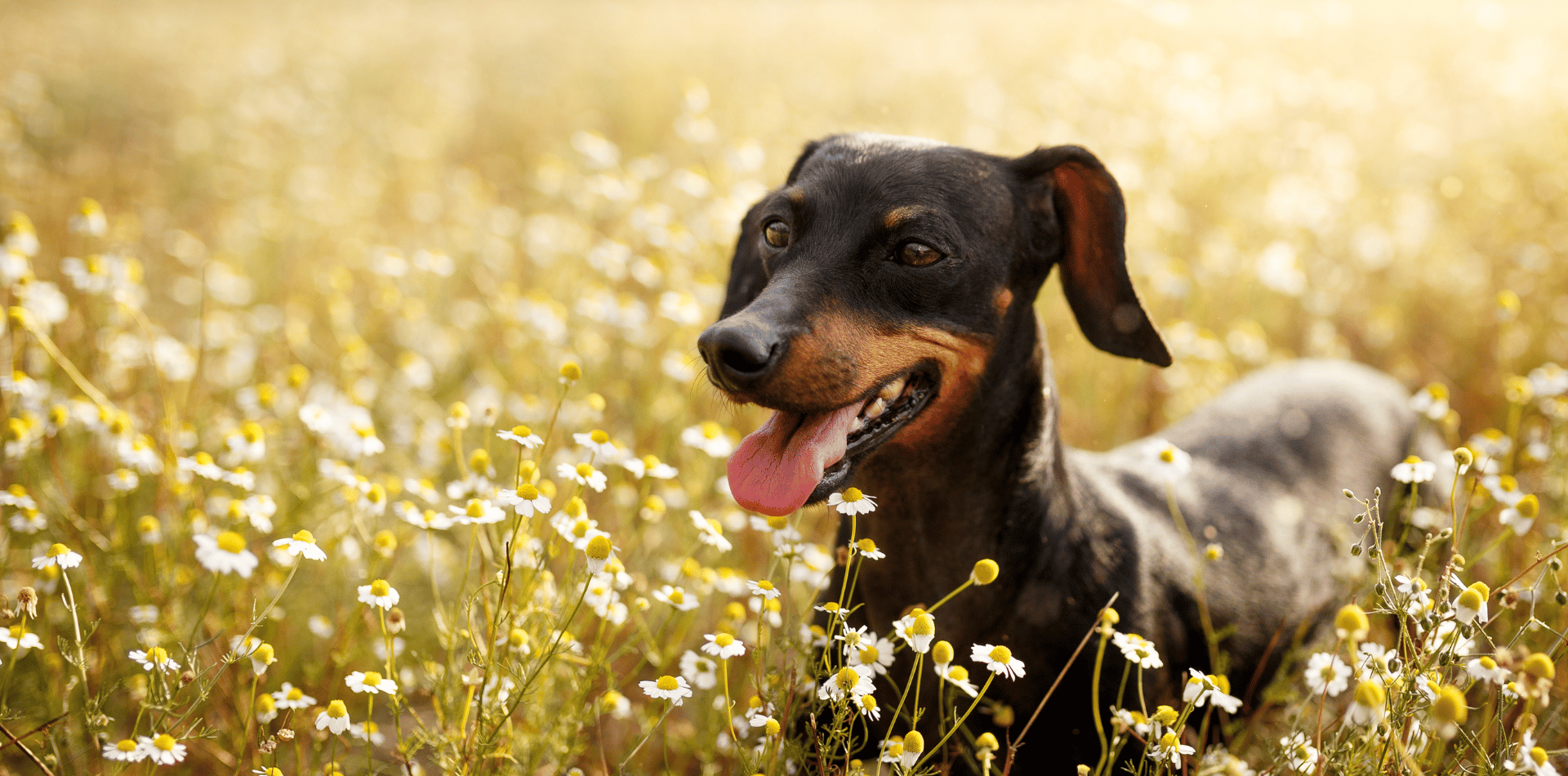
Early Detection
Know the Signs
Early detection of skin cancer in dogs is crucial for successful treatment and management.
However, the initial signs can be subtle and easy to overlook.
As a pet owner, staying vigilant about any changes in your dog's skin is essential for catching these early signs. Regular monitoring and knowing what to look for can make a significant difference in your dog's prognosis and quality of life.
Understanding the Subtle Signs
Skin cancer, much like other forms of cancer, can start with minor changes that might not seem alarming at first.
Here's what to keep an eye out for:
- New Growths: Any new lump, bump, or mass on your dog’s skin should be checked, especially if it grows rapidly. Not all growths are cancerous, but it’s important to rule out cancer with a veterinary examination.
- Changes in Existing Growths: Noticeable changes in the size, colour, texture, or shape of existing moles, warts, or bumps can be a sign of malignancy. A growth that becomes more raised, hard, or starts to ulcerate (break open) should be evaluated.
- Sores or Lesions: Sores that don't heal within a reasonable timeframe, especially if they are oozing, bleeding, or seem to cause discomfort, can indicate an underlying problem, including skin cancer.
- Loss of Hair: Although not exclusively a sign of skin cancer, areas of sudden hair loss without an apparent reason (such as a recent injury) warrant further investigation.
- Discolouration: Patches of skin that change colour, especially those that become darker (hyperpigmentation) or lose colour (depigmentation), could be indicative of skin health issues.
- Texture Changes: Areas of the skin that become unusually hard, scaly, or develop a crust may be showing early signs of cancerous changes.
Steps to Take if You Notice Changes
- Document the Changes: Take notes and, if possible, photographs of the observed changes. This can be helpful for monitoring progress and for consultations with your vet.
- Consult Your Veterinarian: Early veterinary assessment is crucial. Your vet may conduct a physical examination, recommend diagnostic tests like a biopsy, or refer you to a veterinary oncologist.
- Regular Monitoring: Even if an initial assessment doesn’t find anything worrisome, continue to monitor your dog’s skin for any further changes. Early stages of cancer can progress, so ongoing vigilance is key.
- Follow Through With Recommended Tests: If your vet suggests further testing, it’s important to follow through. Early stages of skin cancer can be effectively managed or cured with timely intervention.
Prevention and Regular Checks
While not all cases of skin cancer can be prevented, reducing risk factors such as excessive sun exposure and using vet-approved sunscreen can help. Additionally, integrating skin checks into your regular grooming routine allows you to become familiar with your dog's skin, making it easier to notice when something changes or appears.
Early signs of skin cancer in dogs can indeed be subtle, but with vigilant monitoring and a proactive approach to your dog’s health, you can catch these signs early. Regular vet visits, combined with your observations at home, create a powerful defense against the progression of skin cancer.
Always remember, your awareness and quick action can significantly impact your dog’s health outcome.
Regular Veterinary Check-ups
Regular veterinary check-ups play a pivotal role in maintaining your dog's health and well-being, serving as a critical line of defense in the early detection of skin cancer and other health issues.
Veterinarians are trained to identify subtle signs of disease that pet owners might overlook. These check-ups are not only about vaccinations and routine health; they're an opportunity to assess your dog's overall health status, including the risk factors for skin cancer.
The Role of Veterinary Check-ups
- Expert Evaluation: Veterinarians possess the expertise to detect early signs of skin cancer, such as small lumps, discolouration, or changes in the skin's texture that might not be apparent to the untrained eye. They can also distinguish between benign and more concerning growths, guiding the next steps for diagnosis or treatment.
- Comprehensive Health Assessment: Regular check-ups typically involve a thorough examination of your dog's skin, coat, and overall physique, but they also assess other health indicators such as weight, dental health, and organ function. This holistic view helps identify potential risk factors for diseases, including skin cancer.
- Personalised Advice: Based on your dog's breed, age, lifestyle, and health history, veterinarians can offer tailored advice on reducing cancer risk. This may include recommendations on diet, sun protection, and skin care, among others.
- Early Detection and Diagnosis: Early detection of skin cancer significantly improves the chances of successful treatment. Veterinarians can perform or recommend diagnostic tests, such as biopsies, to confirm the presence of cancer and determine its type and stage. Early diagnosis allows for a wider range of treatment options and often a better prognosis.
- Monitoring and Management: For dogs with a history of skin issues or those at higher risk of developing skin cancer, regular veterinary visits are crucial for ongoing monitoring. Vets can track the progress of previously detected conditions and adjust management plans as necessary.
Frequency of Veterinary Check-ups
- Young, Healthy Dogs: For dogs in good health, annual check-ups are typically recommended. However, breeds known to have a higher risk of skin cancer may benefit from more frequent examinations.
- Senior Dogs or Those With Health Issues: Older dogs, or those with a history of health problems, often require semi-annual or even quarterly check-ups to monitor their health closely and manage any chronic conditions.
Making the Most of Veterinary Visits
- Be Prepared: Before your visit, note any changes in your dog’s behaviour, appetite, skin, or overall health. Bring up any concerns with your vet during the check-up.
- Ask Questions: Use the opportunity to ask for advice on your dog’s diet, exercise, and preventive care to reduce the risk of skin cancer and other diseases.
- Follow Recommendations: Adhere to your veterinarian's advice regarding follow-up appointments, diagnostic tests, or treatments.
Regular veterinary check-ups are essential for early detection of skin cancer and maintaining your dog's health. Veterinarians can spot signs of disease early on, offer expert advice on prevention, and guide you through the diagnosis and treatment process if necessary. By prioritising these visits and following through with recommended care, you're taking a significant step towards ensuring your dog lives a long, healthy life.
Biopsy and Diagnosis
When a veterinarian suspects skin cancer in a dog based on physical examination findings or the owner's observations, they often recommend a biopsy as a critical next step.
This diagnostic procedure involves collecting a sample of tissue or cells from the suspicious area for microscopic examination. A biopsy can confirm whether skin cancer is present, and if so, identify the type of cancer, which is essential for determining the most effective treatment plan.
Understanding the Biopsy Process
- Types of Biopsies: The nature of the suspected cancer often dictates the type of biopsy performed. Options include:
- Fine Needle Aspiration (FNA): Involves using a thin needle to collect cells from a lump or mass. It's minimally invasive and can sometimes be done without anesthesia.
- Punch Biopsy: Removes a small circular section of skin using a sharp, hollow instrument. This method is useful for analysing the layers of the skin and typically requires local anesthesia.
- Incisional Biopsy: Involves removing a portion of a large mass or tumour under local or general anesthesia, particularly when a lump is too large to be entirely removed.
- Excisional Biopsy: The entire lump or growth is removed and examined. This method can serve both diagnostic and therapeutic purposes if the entire cancerous mass is successfully removed.
- Preparation and Procedure: The specific preparation and details of the procedure will vary based on the type of biopsy and the location of the suspected cancer. General anesthesia may be required, especially for larger biopsies or if the area is in a sensitive or difficult-to-reach location.
- Analysis and Diagnosis: The collected tissue samples are sent to a veterinary pathologist, who examines them under a microscope to look for cancer cells. The pathology report can provide detailed information about the type of cancer, its grade (how aggressive it is), and, in some cases, its stage (how far it has spread).
The Importance of Early Diagnosis
- Treatment Planning: A precise diagnosis is crucial for determining the appropriate treatment. Options may include surgery, chemotherapy, radiation, or a combination of these, depending on the type and stage of cancer.
- Prognosis: Early detection and diagnosis often lead to a better prognosis. Certain types of skin cancer, if caught and treated early, can be completely cured or managed effectively for extended periods.
- Quality of Life: Early intervention can prevent the cancer from progressing to a more advanced stage, which can significantly impact the dog's comfort and quality of life.
After the Biopsy
Following the biopsy, your veterinarian will discuss the results with you and recommend the next steps. This may include:
- Referral to a Specialist: In some cases, your vet may recommend consultation with a veterinary oncologist, a specialist in cancer treatment for pets.
- Treatment Options: Depending on the type and stage of cancer, treatment may involve surgical removal of the tumour, chemotherapy, radiation therapy, or palliative care to manage symptoms.
- Follow-Up Care: Ongoing monitoring and follow-up appointments will be necessary to assess how well the treatment is working and to adjust the plan as needed.
If skin cancer is suspected in your dog, a biopsy is a critical step for confirming the diagnosis and determining the best course of action. Early diagnosis through biopsy can significantly improve the chances of successful treatment and help maintain your dog's quality of life.
Working closely with your veterinarian and following their recommendations are key to navigating this challenging situation.
Treatment Options
If your dog has been diagnosed with skin cancer, the treatment plan will be tailored to the specific type and stage of cancer, as well as your dog's overall health and unique circumstances.
The primary goal is to remove or destroy the cancerous cells while minimising side effects and maintaining the highest possible quality of life.
Here’s a look at the common treatment options for skin cancer in dogs.
Surgery
Surgery is often the first line of treatment for many types of skin cancer in dogs, especially if the cancer is localised and hasn't spread to other parts of the body. The goal of surgical intervention is to completely remove the tumour along with a margin of healthy tissue around it to ensure no cancer cells remain.
Surgery can be curative for many localised skin cancers.
- Wide Local Excision: Used for tumours that are confined to one area. The surgeon removes the tumour and a wide area of surrounding tissue to reduce the risk of recurrence.
- Limb Amputation: May be necessary for aggressive cancers of the leg or paw that cannot be fully removed with a more conservative surgery.
Chemotherapy
Chemotherapy involves the use of drugs to kill cancer cells or slow their growth. It is often used when the cancer has metastasized (spread) to other parts of the body or as an adjunct therapy after surgery to kill any remaining cancer cells. Chemotherapy can also be the primary treatment for certain types of skin cancer that are known to be responsive to these drugs.
- Systemic Chemotherapy: Administered orally or through injections, affecting the entire body. It's used for cancers that have spread or have a high risk of spreading.
- Topical Chemotherapy: Applied directly to the skin and is suitable for certain types of localised skin cancers.
Radiation Therapy
Radiation therapy uses high-energy rays to target and kill cancer cells. It's often used for tumours that cannot be completely removed surgically or for cancers known to be responsive to radiation. Radiation can also be combined with surgery and/or chemotherapy for a multimodal approach.
- External Beam Radiation: The most common type, where radiation is directed at the tumour from an external source.
- Stereotactic Radiosurgery (SRS): A highly precise form of radiation therapy that delivers a high dose of radiation to the tumour in one or a few treatments, sparing the surrounding healthy tissue.
Immunotherapy
Immunotherapy is a relatively new field in cancer treatment that harnesses the body's immune system to fight cancer. It includes treatments that stimulate the dog's own immune system to recognise and destroy cancer cells more effectively.
- Cancer Vaccines: Designed to provoke an immune response against cancer cells. Currently, their availability and application in veterinary medicine are limited but expanding.
Palliative Care
When cancer is advanced or when owners choose not to pursue aggressive treatment, palliative care focuses on keeping the dog comfortable. This can include pain management, wound care, and other supportive measures to ensure the best quality of life for as long as possible.
Integrative and Supportive Therapies
Additional therapies may support the dog's overall well-being during cancer treatment, such as:
- Nutritional Support: Tailoring the diet to meet the dog's specific needs during treatment can help maintain strength and improve recovery.
- Physical Therapy: Especially useful after surgery or for dogs with mobility issues related to their cancer or treatment.
- Complementary Therapies: Acupuncture, herbal supplements, and other alternative therapies may be used alongside conventional treatment to help manage symptoms and side effects.
The detection of skin cancer in dogs requires a carefully considered treatment plan, balancing the aggressive treatment of cancer with the preservation of quality of life. Veterinarians may recommend one or a combination of treatments based on the cancer's type, stage, and other factors. Ongoing communication with your veterinary team, including regular follow-ups, is essential to monitor the dog's response to treatment and adjust the plan as needed.
Breed-Specific Considerations
Certain dog breeds have a higher predisposition to developing skin cancer, which can be attributed to genetic factors, coat type, skin colour, and overall susceptibility to health conditions affecting the skin.
Recognising if your dog belongs to one of these breeds is crucial for proactive health management, including adopting a vigilant approach to monitoring for signs of skin cancer and possibly scheduling more frequent veterinary check-ups to catch any issues early.
Breeds with Increased Risk of Skin Cancer
- White or Light-Coloured Breeds: Dogs with light or white fur and those with less pigment in their skin, such as Boxers, Bull Terriers, and Dalmatians, are more susceptible to squamous cell carcinoma, especially in sun-exposed areas of the body.
- Breeds with Short Hair or Sparse Coats: Dogs that have thin or sparse coats, such as Greyhounds and Whippets, have less protection from UV rays, increasing their risk of skin damage and subsequent skin cancer.
- Breeds Prone to Specific Types of Skin Cancer:
- Mast Cell Tumors: Boxers, Boston Terriers, Labradors, Beagles, and Golden Retrievers have a higher incidence of mast cell tumours, which are among the most common skin cancers in dogs.
- Melanoma: Breeds like Schnauzers and Scottish Terriers show a higher predisposition to developing melanomas, though these can vary in terms of aggression and location.
- Squamous Cell Carcinoma: Besides the influence of coat colour and thickness, breeds like the Basset Hound and Bloodhound may have a heightened risk due to their droopy skin, which can create moist environments conducive to skin issues.
Enhanced Vigilance and Care
Owners of breeds more susceptible to skin cancer should take additional precautions to monitor their dogs for any signs of skin abnormalities. This includes:
- Regular Skin Examinations: Becoming familiar with your dog’s skin and coat will help you notice any changes, such as new lumps, bumps, or discoloured patches, more quickly.
- Increased Sun Protection: For breeds particularly vulnerable to sun-induced skin cancer, implementing measures such as using pet-safe sunscreen, providing shaded outdoor areas, and limiting sun exposure during peak hours are important.
- More Frequent Veterinary Check-ups: Discuss with your veterinarian the recommended frequency of check-ups for your dog’s breed and specific health risks. They may advise more regular visits to monitor for signs of skin cancer and other breed-related health issues.
Tailored Health Management
- Preventive Measures: Along with sun protection and regular skin checks, maintaining a healthy lifestyle for your dog through proper nutrition, exercise, and weight management can support their overall health and potentially reduce cancer risk.
- Early Intervention: If you detect any skin abnormalities or changes in your dog’s health, consult your veterinarian promptly. Early detection and treatment of skin cancer can significantly improve outcomes.
Understanding that certain breeds have a higher susceptibility to skin cancer allows owners to take targeted steps towards prevention and early detection. By incorporating more frequent veterinary check-ups, regular skin examinations, and specific care measures, owners can play a pivotal role in safeguarding the health of their predisposed furry companions. Always maintain open communication with your veterinarian to ensure your dog receives the best possible care tailored to their breed-specific needs.
The Role of Genetics
Understanding the genetic predispositions of your dog plays a significant role in assessing their risk for skin cancer and other hereditary conditions.
Certain breeds, as mentioned, are more susceptible to different types of skin cancer due to their genetic makeup.
Beyond breed-specific risks, individual genetic variations can also influence a dog's susceptibility to cancer. In this context, genetic testing emerges as a valuable tool for identifying dogs at higher risk and implementing early monitoring and prevention strategies.
Genetic Testing for Dogs
Genetic testing involves analysing your dog's DNA to identify specific genetic markers associated with an increased risk of developing certain diseases, including skin cancer. These tests can provide insights into your dog's genetic health predispositions, helping you and your veterinarian make informed decisions about their care.
- How It Works: Genetic tests for dogs typically require a simple cheek swab or a blood sample. The sample is then sent to a laboratory, where it's analysed for specific genetic markers linked to various health conditions.
- What It Can Reveal: While genetic testing can identify predispositions to certain types of cancers, it's important to note that a predisposition does not guarantee your dog will develop the disease. However, knowing these risks can be crucial for early detection and prevention.
Benefits of Genetic Testing
- Tailored Health Monitoring: Knowing your dog's genetic predispositions allows your veterinarian to recommend specific health monitoring and preventive measures. For dogs at higher risk of skin cancer, this might mean more frequent skin examinations and stricter sun protection measures.
- Informed Decision-Making: Understanding the genetic risks can guide decisions regarding your dog’s lifestyle, diet, and even breeding plans. It can also prepare you for potential health issues that may arise later in life.
- Early Intervention: Identifying a genetic predisposition to skin cancer enables owners and veterinarians to be more vigilant for early signs of the disease, potentially leading to earlier diagnosis and treatment, which can improve outcomes.
Considerations and Limitations
- Not All-Inclusive: Current genetic tests may not cover every possible genetic marker for skin cancer or other diseases, as research in canine genetics is ongoing. It's also possible for a dog to develop cancer without having the identified genetic markers.
- Ethical and Emotional Considerations: The knowledge gained from genetic testing can come with ethical dilemmas regarding breeding practices and personal emotional impacts. It's important to discuss these aspects with a veterinarian or a genetic counselor.
- Cost and Accessibility: The availability and cost of genetic testing for dogs can vary, and not all veterinary practices may offer this service directly. However, many commercial kits are accessible to pet owners.
Next Steps After Genetic Testing
If genetic testing reveals that your dog is at increased risk for skin cancer, collaborate with your veterinarian to develop a proactive health monitoring plan. This plan may include regular veterinary check-ups, specific lifestyle and diet recommendations, and strategies for early detection of skin conditions.
Understanding your dog's genetic predispositions is a powerful tool in preventive health care, allowing for personalised strategies to mitigate the risk of skin cancer and other genetic diseases. It empowers dog owners with knowledge, enabling them to take proactive steps in managing their pet's health and ensuring they lead a long, healthy life.
Preventing and detecting skin cancer early in dogs requires a combination of vigilant care, regular veterinary check-ups, and an understanding of your dog’s specific risk factors.
While not all skin cancers are preventable, early detection greatly increases the chances of successful treatment, helping your dog lead a longer, healthier life.
As a pet owner, being informed and proactive is the best defense against skin cancer in your canine companion.
More Skin Tips.
CoreBodi
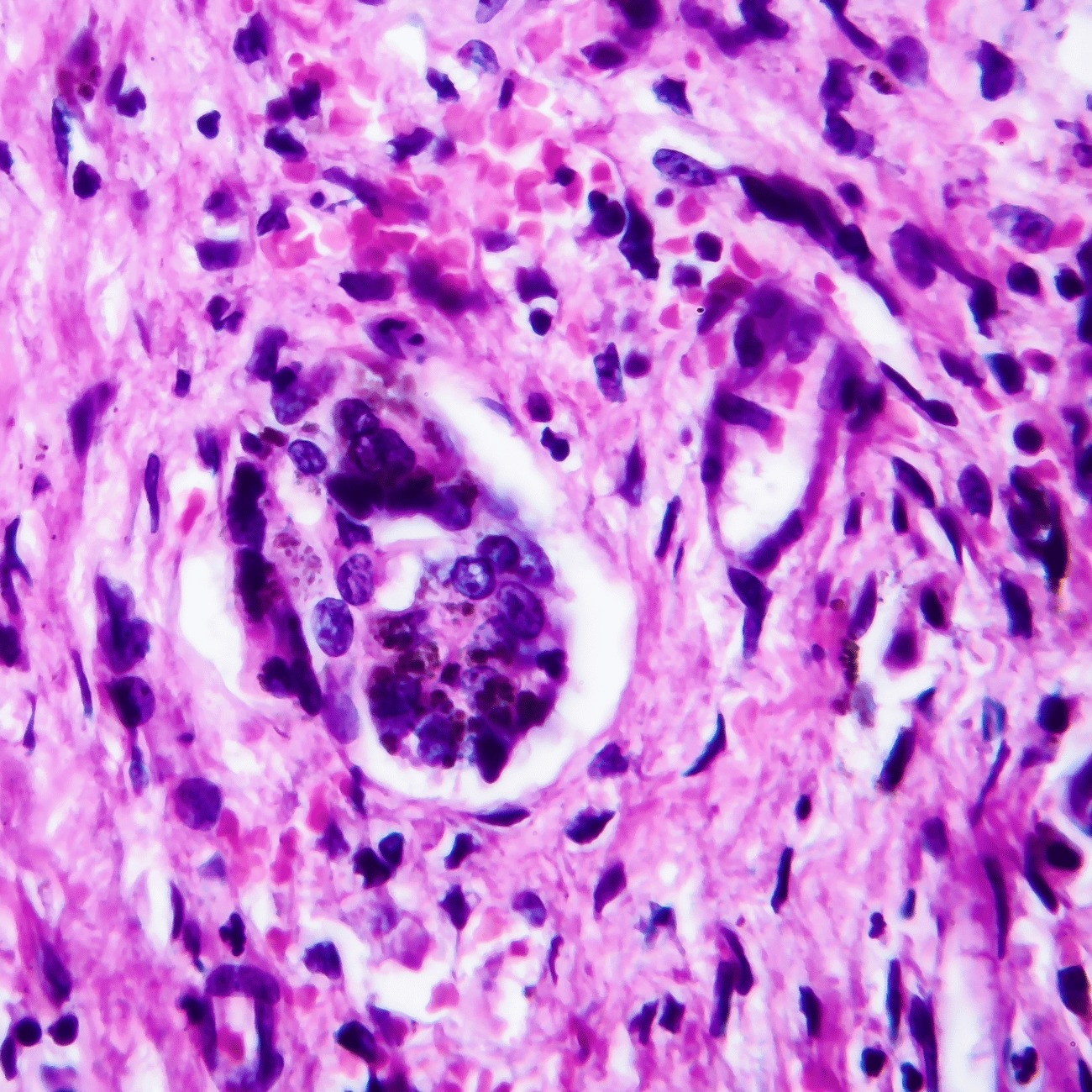




| Powered by Kaptol Media


